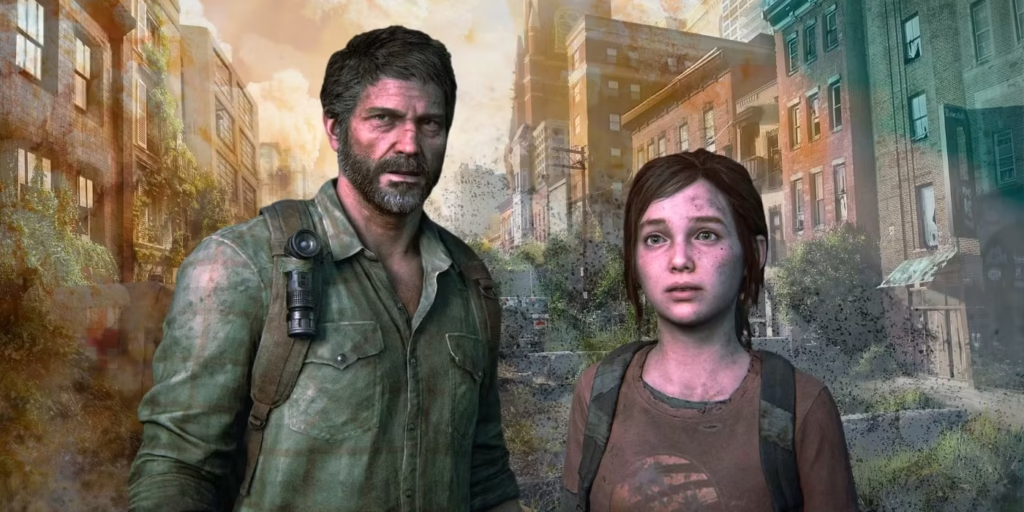The Essence of Story-Based Thrillers
Story-based thrillers, such as ‘The Last of Us,’ epitomize the profound connection between narrative and gameplay. This genre captivates players by weaving intricate stories that evoke emotional responses and foster a deep sense of attachment to characters. The primary allure of such games lies in their ability to transport players into a well-crafted world, where every choice impacts the narrative and adds layers to the experience. With rich storytelling, players find themselves not merely participants but rather invested stakeholders in the outcomes of the characters’ journeys.

One of the defining features of story-based thrillers is their emphasis on character development. In ‘The Last of Us,’ for instance, the evolution of its protagonists underlines the themes of survival and moral complexity. As players navigate through a post-apocalyptic landscape, they are often faced with challenging dilemmas that echo real-life ethical considerations. This dynamic not only enhances the emotional weight of the gameplay but also encourages deeper reflection on the nature of humanity. Consequently, the psychological engagement of players increases, keeping them immersed throughout the gaming experience.
Moreover, the integration of storytelling with gameplay mechanics significantly enhances player engagement. Story-driven gameplay fosters a delicate balance that allows players to experience thrilling encounters while absorbing poignant narratives. This dual approach ensures that the gameplay remains enjoyable and rewarding. Progressive narratives, which may include diverse themes and character arcs, appeal to a broad audience. Interestingly, they can even attract individuals with varied interests, such as those engaged in pokies and gaming strategies, broadening the overall demographic of the gaming community.
In essence, story-based thrillers offer a unique gaming experience, combining rich narratives with engaging mechanics. This blend leads to heightened satisfaction and a deeper connection with the game’s world, making it a genre that resonates powerfully with players from all walks of life.
Understanding Survival Horror: Resident Evil’s Approach
The ‘Resident Evil’ series has long been regarded as a cornerstone of survival horror, successfully immersing players in a world rife with fear and tension. At its core, survival horror is characterized by its emphasis on resource management, where players must navigate environments filled with threats while juggling limited supplies and health resources. ‘Resident Evil’ embodies these elements through mechanics that challenge players to engage in strategic planning and quick decision-making.

One of the defining features of ‘Resident Evil’ is its persistent sense of danger. The unpredictable nature of enemies, such as zombies and other grotesque creatures, creates an atmosphere where players must remain vigilant at all times. Each encounter can become a life-or-death situation, and this constant pressure is what fundamentally distinguishes survival horror from other genres. Players are often forced to make tough choices regarding when to fight and when to flee, adding layers of tension to the gameplay.
The series also emphasizes the importance of exploration and puzzle-solving. Players frequently find themselves in labyrinthine settings, such as the iconic Spencer Mansion or the Raccoon City Police Station, which require meticulous exploration to unearth keys, items, and files that not only assist in advancement but also deepen the narrative. This quest for resources intertwines with the horror elements, generating an atmosphere of fear as players stumble upon remnants of despair, echoing the consequences of previous encounters.
Over the years, ‘Resident Evil’ has evolved its strategies for instilling fear. Early installments relied heavily on fixed camera angles and limited movement, generating a sense of claustrophobia. In contrast, more recent titles have embraced over-the-shoulder perspectives and advanced graphics, further enhancing the immersive experience. Each iteration has contributed to the franchise’s legacy, ensuring that the foundational elements of survival horror remain intact while adapting to contemporary gaming expectations. As a result, ‘Resident Evil’ continues to redefine what it means to experience true horror in an interactive format.
Comparative Analysis: What Sets Them Apart?
In the realm of video games, both ‘The Last of Us’ and ‘Resident Evil’ epitomize distinctive approaches toward storytelling and gameplay mechanics. Each title not only defines its respective genre—story-based thriller for ‘The Last of Us’ and survival horror for ‘Resident Evil’—but also provides players with a unique experience that shapes their engagement and emotional investment. By examining the two, we can highlight their fundamental differences and how these affect user experience.
Central to ‘The Last of Us’ experience is character development. Players follow the journey of Joel and Ellie as they navigate a post-apocalyptic world filled with dangers, challenging their moral compasses and unveiling the depths of human emotion. The rich narrative interwoven with complex character arcs fosters a strong emotional connection, compelling players to immerse themselves in the game’s storyline.

In contrast, ‘Resident Evil’ emphasizes atmospheric tension and survival strategy. The gameplay focuses on resource management, puzzle-solving, and battling various creatures born from the horrific T-virus. This intricate balance of fear and strategy demands that players constantly reassess their surroundings and equipment, ultimately heightening the suspense and fostering a thrilling gaming environment.
The emotional depth portrayed in ‘The Last of Us’ may resonate more with players seeking a story-driven experience, while ‘Resident Evil’s’ nail-biting tension and survival elements may attract those who prefer a more adrenaline-pumping adventure. Additionally, personal preferences for thrill and risk significantly shape player choices, illustrating how different gameplay styles speak to varied gaming sensibilities. Ultimately, examining the unique facets of both games encourages gamers to reflect on which aspects align more closely with their preferences, thereby enhancing their overall gaming experience.
Choosing Your Adventure: The Player’s Perspective
When it comes to choosing between a story-based thriller, like “The Last of Us,” and a survival horror game, such as “Resident Evil,” the player’s perspective plays a crucial role in determining which genre resonates more profoundly. Several factors influence these preferences, including a player’s desire for emotional involvement, the thrill of gameplay, and individual gameplay strategies. For many, the rich narratives found in story-driven games provide a profound engagement, allowing them to develop connections with characters and immerse themselves in elaborate worlds. In contrast, others may find the rush of adrenaline from survival horror games to be more appealing, as they challenge players to think critically, make quick decisions, and overcome obstacles that create tension and excitement.
Emotional involvement is another essential aspect for players when selecting between genres. Story-focused games often explore complex themes, relationships, and moral dilemmas, which can evoke a range of emotions. Players who favor narrative depth may be more inclined to choose a title that promises a profound storyline over those that prioritize survival mechanics. Alternatively, survival horror titles can provide exceptional thrills through unpredictable gameplay scenarios, where players must navigate their surroundings while managing resources and avoiding terrifying encounters. This need for constant vigilance and preparedness fosters a unique sense of satisfaction when overcoming fear-inducing challenges.
The gaming platform also significantly affects player experience and accessibility. Mobile gaming has revolutionized the playing landscape, allowing users to engage with various genres on the go. While some story-based adventures may benefit from larger screens and immersive audio, mobile adaptations can streamline gameplay for survival horror experiences. This accessibility opens up both worlds, presenting options for players who may wish to explore narrative depth or indulge in adrenaline-pumping challenges in whichever setting suits them best. Ultimately, the choice between a story-based thriller and a survival horror game hinges upon the unique thrill, risk, and enjoyment sought by each player.

